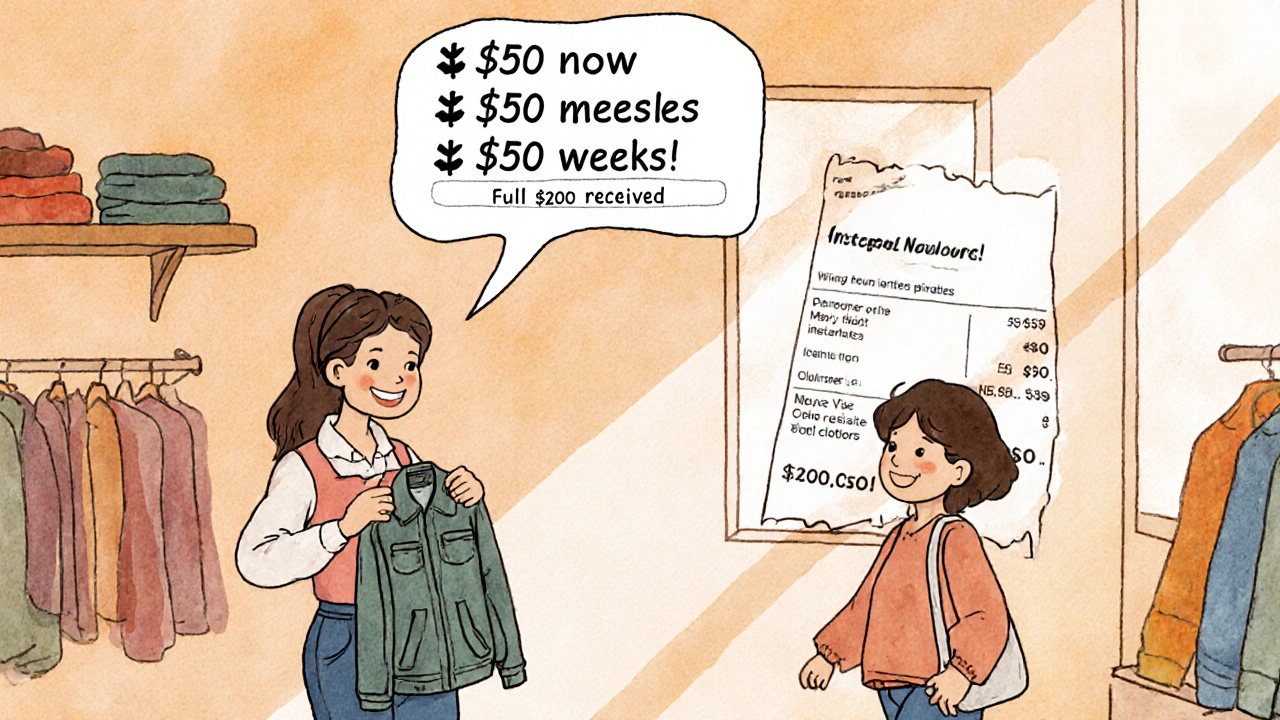Klarna for Merchants: How Buy Now, Pay Later Works for Your Business
When you hear Klarna, a buy now, pay later (BNPL) service that lets customers split payments over time. Also known as installment payments, it's not just a checkout option—it's a sales engine for online stores. More than 250,000 merchants use Klarna because it turns hesitant shoppers into buyers. You don’t need to be a big brand to benefit. Even small shops selling handmade goods or niche tech gear see 20-40% higher conversion rates when they offer Klarna at checkout.
How does it actually work for you? Klarna handles the risk. When a customer picks "Pay in 4" or "Pay in 30 days," Klarna pays you upfront—full amount, minus a fee. The customer pays Klarna later, in installments. If they default? You’re not on the hook. That’s the big difference between Klarna and traditional credit cards. With cards, you might get chargebacks. With Klarna, you get paid, and they handle collections. This makes it safer than offering your own financing. It also cuts down on abandoned carts. People who walk away from a $200 order often say yes when they can pay $50 now and the rest later.
But it’s not free. Klarna charges merchants between 3% and 6% per transaction, depending on your industry, sales volume, and risk profile. That’s higher than a standard credit card swipe, but you’re trading lower margins for higher volume. A study by a European retail analytics firm found that stores using Klarna saw 3x more orders from first-time buyers. And those buyers? They come back. Klarna users spend 25% more on average over time compared to those who pay upfront. That’s not just a one-time boost—it’s long-term customer growth.
It’s not just about the money. Klarna integrates with Shopify, WooCommerce, BigCommerce, and other platforms most small businesses already use. You don’t need a tech team to set it up. The checkout button shows up with a few clicks. You can even test it on a small batch of products first. Run it for 30 days on your top-selling item. Track how many people who clicked "Pay with Klarna" actually completed the purchase versus those who left. You’ll likely see a jump.
What about fraud? Klarna uses real-time risk scoring. If a customer has a history of missed payments, Klarna might block the option for them. You don’t have to review each one. The system does it for you. And if you’re worried about returns? Klarna adjusts the payment schedule automatically if the customer returns part of their order. No extra work for you.
For merchants who sell high-ticket items—like fitness gear, jewelry, or home tech—Klarna is almost a necessity. Customers don’t want to pay $800 all at once. But they’ll pay $200 now and $200 a month for four months. That’s the power of breaking up big numbers. It’s not magic. It’s psychology. And Klarna makes it easy to use.
But Klarna isn’t the only BNPL option. Afterpay, Affirm, and PayPal Pay in 4 also work with merchants. The difference? Klarna has the biggest brand recognition in Europe and the U.S., and it’s the most trusted by shoppers. That matters. If your customer sees Klarna at checkout, they feel safer. They know it’s not some random app.
So if you’re wondering whether Klarna for merchants is worth it, ask yourself: Are you leaving money on the table because people can’t afford to pay upfront? If yes, then you’re already losing sales. Klarna doesn’t just add a payment option—it removes a barrier. And in today’s market, removing barriers is how you grow.
Below, you’ll find real guides from other merchants who’ve used Klarna—how they set it up, what fees they pay, how their average order value changed, and the one mistake most new users make. No fluff. Just what works.
BNPL for Small Businesses: How to Accept Installment Payments and Boost Sales
BNPL lets small businesses offer interest-free installment payments while getting paid upfront. Learn how to set it up, which providers to choose, and how to avoid costly mistakes that hurt your margins.
View More